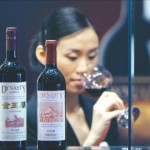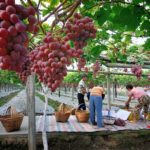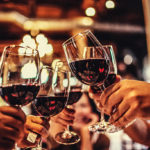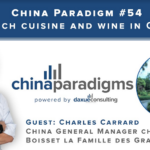Who are the New Chinese Wine Consumers for 2016?
To know more about the Chinese Wine Consumers in 2016, contact us at dx@daxueconsulting.com
The New Chinese Wine Consumers in 2016
Since the turn of the twenty-first century, the wine industry in China has grown rapidly and it will continue to do so. Recent data found that the total volume of sales of still grape wine rose from nearly 1.5 billion liters in 2010 to more than 2 billion liters in 2015. Moreover, we expect that by 2020 the figure will reach 3.5 billion liters. Chinese consumption of wine, however, has always been dominated by red wines. We also anticipate this consumer pattern to endure. Daxue Consulting calculated that the total volume of sales of still red grape wine was 1.5 billion liters in 2015 and estimated that it will reach 2.8 billion liters by 2020. By contrast, the total volume of sales of still white grape wine was counted at 164 million in 2015 and is only projected to reach 655 million liters by 2020. Although there could be a significant percentage increase in the total volume of sales for white wine sold in China, it is not close to the volume of red wine currently being purchased. Daxue Consulting has previously posted articles explaining why red wine is the principal commodity in the Chinese wine industry. This article, however, will assess other trends in Chinese wine consumption that indicate Chinese consumer behavior could eventually evolve to appreciate white wine too. It will do so by analyzing the insights of experts in the Chinese wine industry.
New Trend in Chinese Consumption
In 2004 wines from Bordeaux accounted for 76% of the global fine wine market with the remainder split between Burgundy, Champagne, Rhone, Italian and ‘rest of the world’ wines. Yet, by 2010 the landscape was much different. The secondary trading activity in the global fine wine market was 96% Bordeaux wines, with 61% of those just in first growth wines. This was due to a surge of Chinese investment in Bordeaux’s finest clarets. This bubble, however, burst and the market has now returned to a similar pattern to 2004. Indeed, Bordeaux wines account for 74% of the global fine wine market.
This recent rise and fall is not representative of the perpetual growth the Chinese wine industry has witnessed since the turn of the century. Wine Intelligence has generated statistics that illustrate these two contrasting market patterns. They estimate that a greater number of Chinese citizens are drinking more imported wine than before. It is not a market limited to an upper-class that brought fine wine for status, hence the total volume of wine consumed is still increasing despite the consumption of the finest French wines decreasing.Chinese wine consumers are drinking for personal daily consumption. Indeed, the 19 million Chinese imported wine consumers in 2010 have risen to 48 million in 2016. Moreover, a large proportion is not even from tier one cities as 37% of these consumers reside in tier two cities. A wider Chinese customer base has emerged, which is not solely the elite echelons of Chinese society. Furthermore, they are clearly drinking a range of wines, not just the finest French wines. Their research is supported by a study conducted by the Ehrenberg-Bass Institute for Marketing Science. They too concluded that Chinese wine consumption was becoming more frequent and the number of people buying imported wine was increasing. Indeed, Larry Lockshin, a professor of wine marketing at Ehrenberg-Bass, noted that ‘occasions started to become less formal’ for Chinese wine consumption. Meanwhile, Changqing Duan, the director of the Centre for Viticulture and Oenology at China Agricultural University, acknowledged that there has been a switch from wine brought as an expensive gift to that purchased for personal daily consumption. The overall transition is summarized by Richard Halstead, the co-founder of Wine Intelligence. He stated that in China there is a movement ‘from the era where prestige wine was only brought as a face-enhancing gift towards the world where consumers care more about how it tastes – because they will be drinking it themselves – and how much it costs, because they are more likely to be paying for it themselves.’
Don St. Pierre Jr., the co-founder of ASC Fine Wines, said that a consequence these changes would be a progression in consumer knowledge of the beverage. In a sense, there is a westernization of consumer behavior in the Chinese wine industry. More people and a greater diversity of people are drinking wine in China, the prices and types of the wine being drunk are becoming more varied and consequently, customer knowledge of the wine industry is also increasing.
The Future of White Wine in China
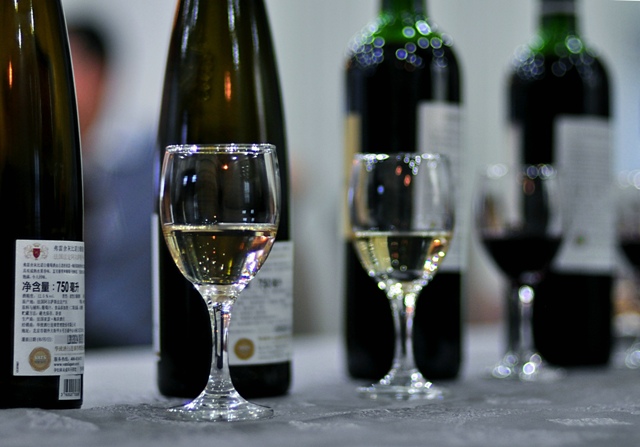 A potential ramification of these new market trends is possible growth in the Chinese white wine market. It is not suggested that sales of white wine might suddenly rise exponentially. It will, however, point out that the slight westernization of wine consumption in China is positive for white wine producers worldwide. With increasing consumer knowledge of the wine industry, a more diverse range of clients and an unprecedented level of personal consumption there is potential that consumers in the Chinese wine industry will want to experiment and engage more with white wine. Indeed, Jancis Robinson, a British wine critic, has reported that white wine is starting to enter Chinese wine shops. There have already been changes in attitude towards wine in China over the last decade. From being perceived as a suitable luxury present, it is now consumed on a personal daily basis. Perhaps further change will witness a newfound demand for white wine in China. There is no guarantee, but it is something to keep an eye on.
A potential ramification of these new market trends is possible growth in the Chinese white wine market. It is not suggested that sales of white wine might suddenly rise exponentially. It will, however, point out that the slight westernization of wine consumption in China is positive for white wine producers worldwide. With increasing consumer knowledge of the wine industry, a more diverse range of clients and an unprecedented level of personal consumption there is potential that consumers in the Chinese wine industry will want to experiment and engage more with white wine. Indeed, Jancis Robinson, a British wine critic, has reported that white wine is starting to enter Chinese wine shops. There have already been changes in attitude towards wine in China over the last decade. From being perceived as a suitable luxury present, it is now consumed on a personal daily basis. Perhaps further change will witness a newfound demand for white wine in China. There is no guarantee, but it is something to keep an eye on.
Industry Case: Chinese Wine Consumers
One of Daxue Consulting’s clients was launching a media campaign in China to trigger interest among Chinese wine consumers in a new type of sparkling wine. The client wanted to know what advert would attract Chinese consumers most effectively.
Daxue conducted interviews on the phone after respondents viewed a range of adverts on a secure website. Our consultants took care of rotatingthe ads for each respondent to ensure no bias was created by the order in which the ads were shown. They were viewed by60 experts on Chinese wine,who were subsequently asked to rate the adds based on their relevance and interest.
The report helped the client by portraying differences between their internal preferences and those from the experts. Indeed, the ad chosen by the experts wasn’t the most artistic one, but its impact and call to action was much higher than the more creative one.
Follow us on Twitter, to see our latest posts!




![[Podcast] China Paradigm 41: How to start a trendy wine chain in China](../wp-content/uploads/2019/05/Podcast-wine-chain-China-150x150.jpg)
